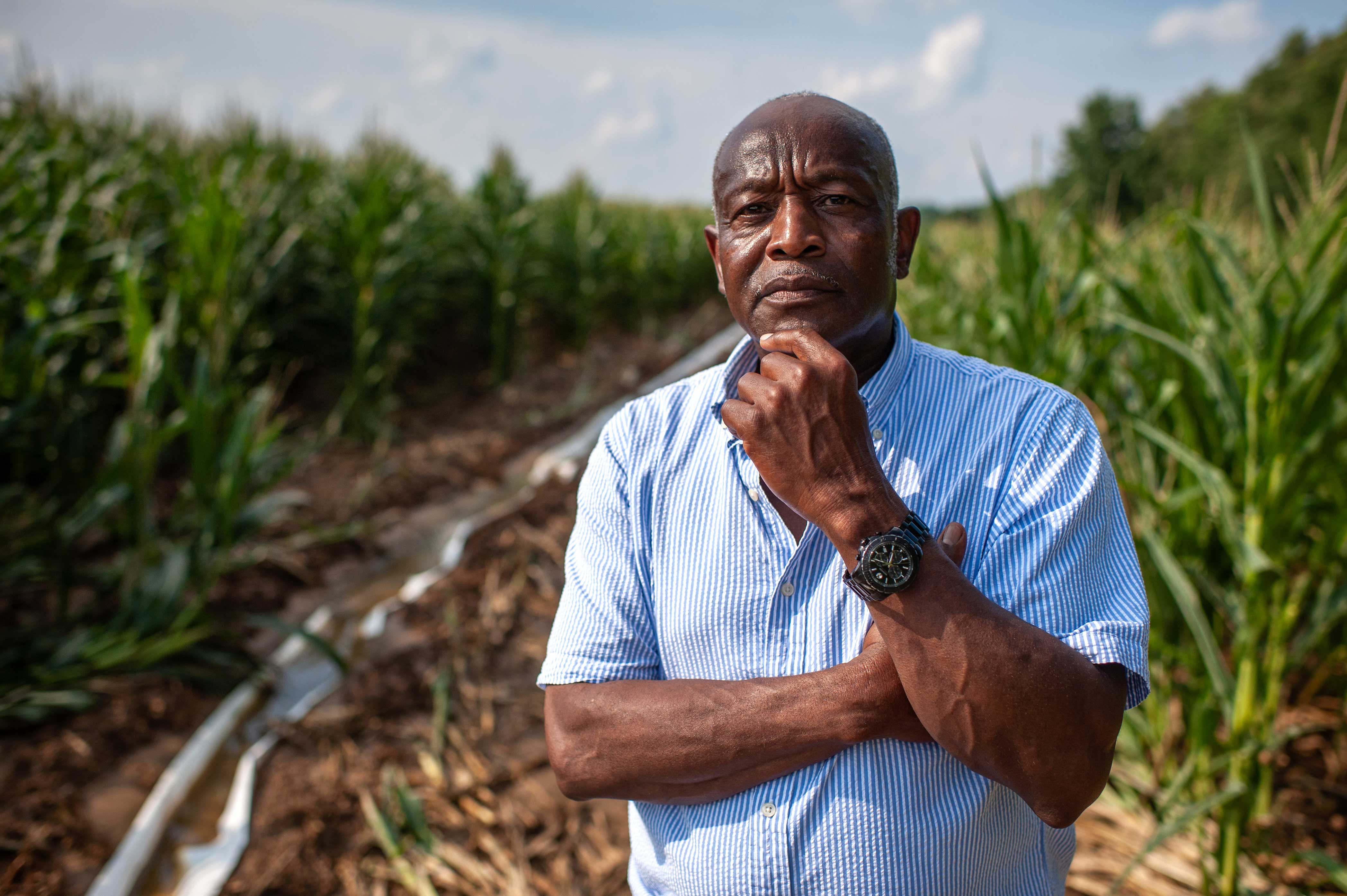
Reinvesting in the Mississippi Delta
A new reforestation program pays landowners for the environmental benefits that come from restoring forests on their most flood-prone lands.
Flooding is a fact of life along the Mississippi River and its tributaries. But those floods are becoming bigger, more frequent, and more damaging. The National Oceanic and Atmospheric Administration (NOAA) predicts a significant increase in rainfall in the Mississippi basin in the next 30 years.
Across the Mississippi River Delta region, farmers are already struggling to produce crops on their lowest and wettest fields. Planting such fields represents a significant financial risk every year, especially in a rapidly changing climate.
Quote: Jason Milks
The farmers here have been asking for help for a long time. But so many farmers are asking for assistance that current government funding programs are just not sufficient. We need new sources of money to address the needs of landowners who want to reforest their lands.
Enroll in the Floodplain Reforestation Program
The Floodplain Reforestation Program is currently enrolling landowners in parts of Arkansas, Mississippi and Louisiana. To learn more, contact us at 870-290-4331 or email FRP@TNC.org.
A New Market for Reforesting Degraded Floodplains
What are carbon markets?
A carbon market is a system for buying and selling carbon credits. These credits allow companies, governments, and other organizations to address parts of their greenhouse gas emissions by funding projects and programs designed to avoid or reduce carbon dioxide released into the atmosphere. Explore our illustrated guide to the Voluntary Carbon Market.
TNC has partnered with Bain & Company, the Walton Family Foundation, the American Forest Foundation, and Harvard Business School’s Community Partners Program to pilot a new finance model for conservation in the Delta region. The Floodplain Reforestation Program will generate carbon credits that can be combined with other sources of funding to finance reforestation on the wettest Delta lands. This new revenue opportunity will help make reforestation a financially viable alternative for landowners trying to grow row crops on flood-prone sites.
Stay connected for more reforestation stories.
Sign up to receive Nature News email updates about this and other projects.

How Floodplain Reforestation Helps People and Nature
The benefits extend beyond new revenue streams for farmers and landowners. Reforesting the wettest places in the Delta will also:
- Save billions of dollars in crop insurance and disaster relief;
- Reduce financial impacts to thousands of landowners;
- Reduce millions of tons sediments and nutrient runoff into the Mississippi and the Gulf of America;
- Sequester millions of metric tons of carbon dioxide to mitigate future climate change every year;
- Restore habitat for wildlife; and
- Create new forest and recreation-based opportunities that will benefit the economies of surrounding communities.
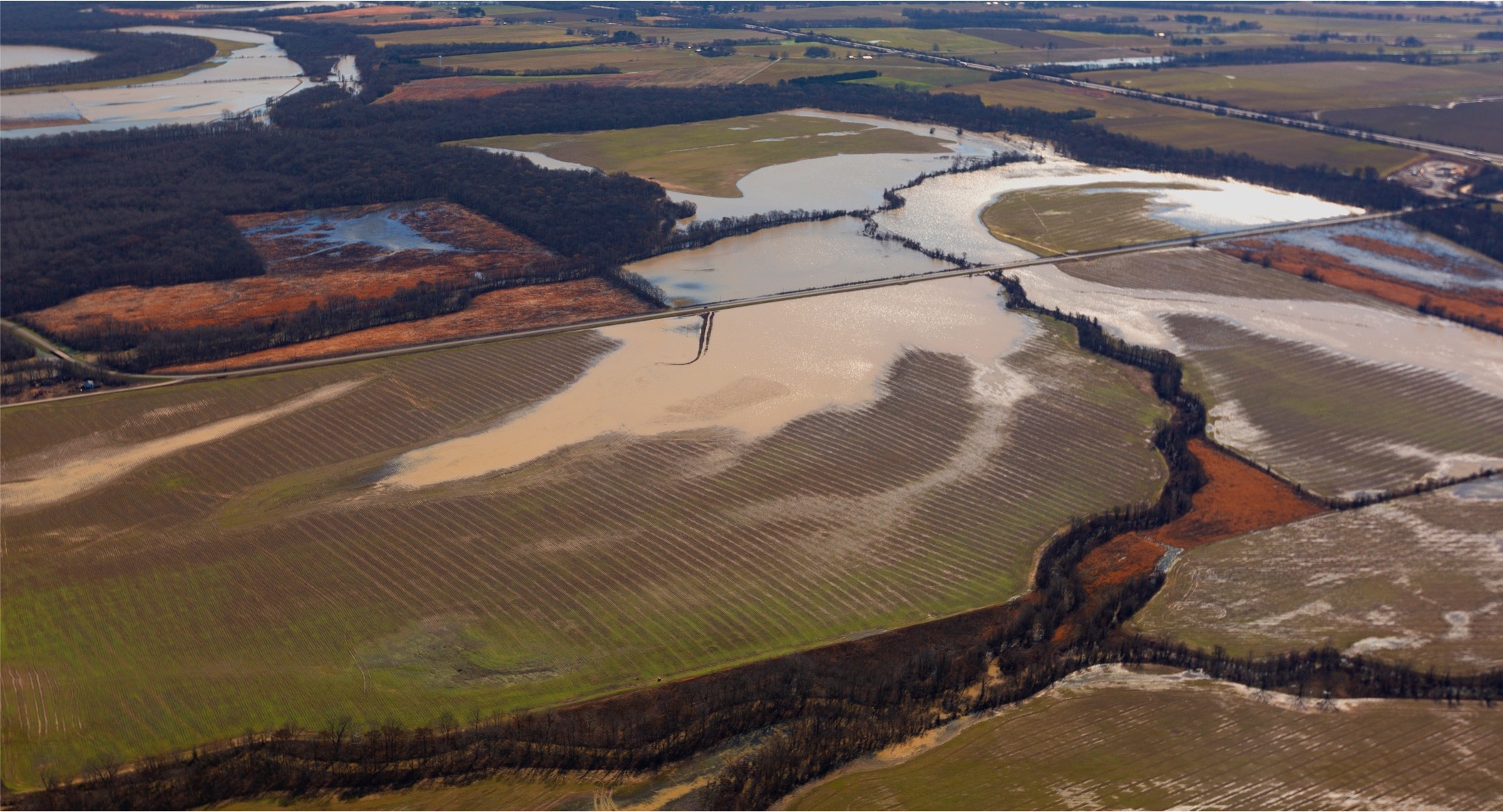
History of the Mississippi Alluvial Valley
Forest to Farms, and Back Again
The historic floodplain of the Mississippi River is known as the Mississippi Alluvial Valley. It begins where the Ohio River empties into the Mississippi, fanning out across some 24 million acres of the southern United States. Today, the valley is a shadow of its former self.
As recently as 200 years ago, this region was almost completely forested. Baldcypress and tupelo rose from the banks of the bayous. Further from water’s edge, flat forested plains extended across the landscape, a blanket of oak forests sprinkled with elms, ash, and maple. Over the centuries, the river deposited silt and sand to form ridges and carved out depressions and oxbows in a complex topographic texture. “Those little changes in the topography led to a diverse landscape of forest types across the valley,” Milks says.
The valley’s forests and wetlands were home to a rich habitat for plants and animals. The landscape also served as an important migratory pathway for hundreds of bird species. After the Civil War, things changed. Up until the end of the 20th century, landowners continued to clear and drain those wet forests to plant cotton, rice, and soybeans. Today more than three quarters of the Delta’s historic wetland forests have been converted to agriculture. Systems of levees and drainage ditches have been built to reduce impacts from flooding, but the wettest, lowest lands are still vulnerable.
“By the 1980s, some farmers were starting to recognize that some of these lands shouldn’t have been cleared. They flood too often to be profitable for farming,” Milks says. “At the same time, there started to be increasing demand for conserving remaining forests and replacing some of what was lost.” By the late 1990s, TNC began working with landowners to restore tens of thousands of those acres each year, using funding from the U.S.D.A. Natural Resources Conservation Service’s Wetland Reserve Program (WRP). Through that program and other complementary reforestation efforts, approximately a million acres across the Delta of Mississippi, Louisiana, and Arkansas has been reforested in the last 30 years.
While those efforts continue, current funding sources are 50% less than originally approved in the Farm Bill, and costs have increased. As a result, existing programs simply can’t keep up with landowner demand. “This part of the world is experiencing large rainfall events, which are occurring later in the year. The need is much greater than what Farm Bill programs can provide,” Milks says. “With increased costs and razor-thin profit margins, some of the land that was profitable for farming even 10 years ago isn’t any longer, and farmers are feeling the pinch.”
A Future of Healthy Forests
Eventually, we hope this model will result in many healthy forest tracts across the Mississippi Delta. To get there, we need both landowner engagement and hard science.

Reforesting the U.S.
Private landowners have a critical role to play in efforts to restore our forests. Research shows that 88% of the opportunity areas for reforestation in the contiguous US are on privately owned land. Planting trees on these lands could capture 492 million tonnes of carbon dioxide per year.
In an initial pilot project, we’re recruiting landowners in Arkansas, Louisiana, and Mississippi to reforest some 3,600 acres. Rather than work with one or two large landholders, we will work with small-scale farmers, including Black farmers who have been disproportionately affected by a legacy of discriminatory policies and inequities in agricultural loans and relief programs.
Today, TNC and our partners are taking steps to ensure that initiatives such as the Floodplain Reforestation Program are available to all farmers who can benefit from them.
For years, farmers in the Mississippi River Delta have experienced hardship from flooding, which is projected to worsen in the coming decades. By aligning investors, landowners, foundations, and government, TNC and our partners hope to turn these hardships into opportunities that will benefit farmers, communities, and the native wildlife of the Delta for years to come.
Support the Floodplain Reforestation Program
You can support this innovative pilot project to deliver essential floodplain reforestation to benefit the Mississippi River Delta and demonstrate proof of concept for expansion in other regions.
In more than three decades of reforestation projects in the Mississippi River Delta region, TNC staff and scientists have developed a solid understanding of how to rebuild healthy forests that add value for landowners and the environment. To reduce the impacts of climate change in the Mississippi Alluvial Valley, we must work together with people across a wide spectrum—community leaders, farmers, growers and more.
Meet some of the people behind this work:

Enrolled Landowner
Max Woodfin
Max Woodfin is unfazed by the cold February winds blowing across the Delta as he and his nephew Greg Garrison walk parallel to the team of professional tree planters on their family farm. Work is in full swing to plant the challenging alluvial soil with more than 36,000 strategically selected varieties of oak and other hardwood seedlings to reforest the Woodfins’ farm in an area known as Dark Corner. Read his story

US Reforestation Program Director
Jason Milks
“Let me ask your opinion,” says conservation biologist Jason Milks.
He’s standing atop a concrete bridge spanning a murky bayou in Arkansas, contemplating a different approach to controlling its water: get rid of a levee and a culvert, maybe; dig out some depressions to hold the water.
“Would that make a difference?” he asks. “Would that be desirable?”
“Not in my book,” the farmer who owns this land replies, then launches into a brief but complex explanation having to do with the erosive force of water and the inevitable destruction of beavers.
It’s useful intel for Milks, who partnered with the Natural Resources Conservation Service (NRCS) to dig this bayou into a patch of former rice fields. The idea was to relink two historic waterways, helping water flow across a stretch of former Mississippi River floodplain to support a new wetland forest grow on top. Over the past two decades, Milks has helped put tens of thousands of acres of forests back into the Delta region. Now, as the Director of TNC's US Reforestation Program, he wants to expand the work by an order of magnitude: we might plant a million acres of forests across Louisiana, Arkansas, and Mississippi, he says—all without disrupting the vibrant local agricultural economy.
Milks grew up outside of Little Rock and spent his childhood hunting and fishing with his father. “He taught me how finding peace in solitude and connection with nature and God—that just became a really important centering place for me,” Milks says.
In college, these pursuits carried Milks into the Delta, which instilled a begrudging admiration.
“It’s buggy. It’s hot. It’s snaky. Everything in the Delta is there to stop you from being there,” he says, laughing. “And I like that.” There’s beauty in the harshness, he thinks: whether you’re trying to farm or hunt ducks, it’s a place that’ll teach you that nothing comes without hard work.
A few years out of college, Milks accepted an internship with the U.S. Fish and Wildlife Service. His work in an Arkansas wildlife refuge underlined the challenges of the Delta—and the joy.
“Man,” Milks says, remembering those days. “Marking timber. Busting out beaver dams on moist-soil units. Counting ducks as they were coming in for the fall. Field-dressing deer. I was doing all kinds of stuff.” He was in the woods five days a week, then came home to bartend in Little Rock so he could pay his bills. But there was nothing else he’d rather do.
The experience led to a job with Ducks Unlimited, a nonprofit that at the time was just launching some of the first major reforestation projects in the Delta. Milks was in his early 20s, and says that at the time he didn’t think about the bigger picture. He was just having a good time in the woods. Fast forward twenty years, though, and Milks—who has worked for the Nature Conservancy since 2005—would come to realize despite years of working with landowners, dutifully restoring forests, he had barely made a dent in demand.
There are countless reasons to return farmland to the wetland conditions that once reigned across the Delta: it creates habitat for birds and wildlife wildlife; it can help keep agricultural nutrients out of the Gulf of America, reducing impacts on sea life. Besides, there’s a lot of farmland that probably should never have been cleared. One farmer, for example, bought this parcel around 2000 and hoped to grow rice. Then he was hit by a massive flood in 2011. When the NRCS came calling, asking if he wanted to put it into a conservation easement, his response was easy: “You can have it,” he told the agency.
Congress gives the NRCS tens of millions of dollars each year to spend on conservation easements. But the portion of the money that goes to Arkansas often covers less than 10,000 acres of restoration.
“There are literally hundreds of landowners, tens of thousands of applications, that are not able to be funded every year,” Milks says. Scientific models suggest that local flooding will increase in the coming years—which will only increase demand for easements, Milks thinks. TNC has the skills to conduct the planting. The only holdup is the money.
Milks knows he’ll never convince Congress to triple the budget for conservation easements. That’s why he’s settled on a different approach. The newly planted trees store carbon, helping mitigate climate change. Thousands of companies have pledged to be carbon neutral by 2050. Many of those companies’ supply chains depend on the Delta. They might be willing to pay for these forests, Milks realized.
Now Milks is working to develop a 3,600-acre proof-of-concept project. Even at that pilot scale, this is substantial undertaking. Milks is working with the nonprofit Verra to develop new credentialing standards for forestry projects. He’s seeking new tools that can help monitor carbon uptake in the forests. He is thinking carefully about how to make sure landowners that are often left out of government easement programs can participate. “We want to set the standard,” he says.
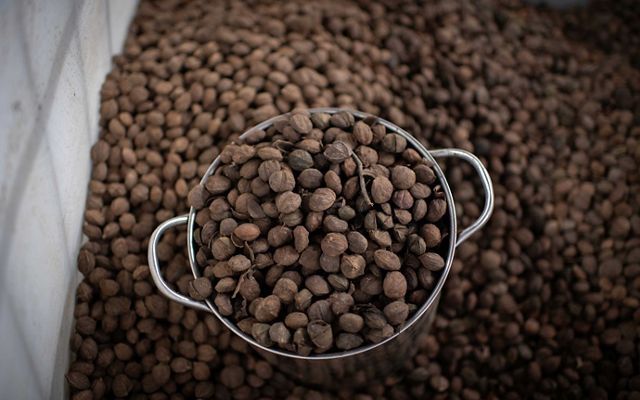
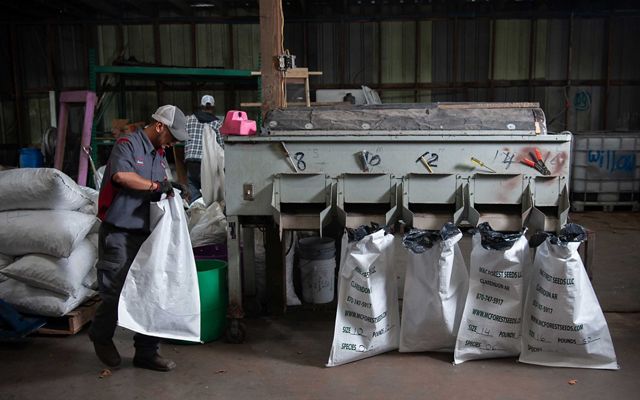
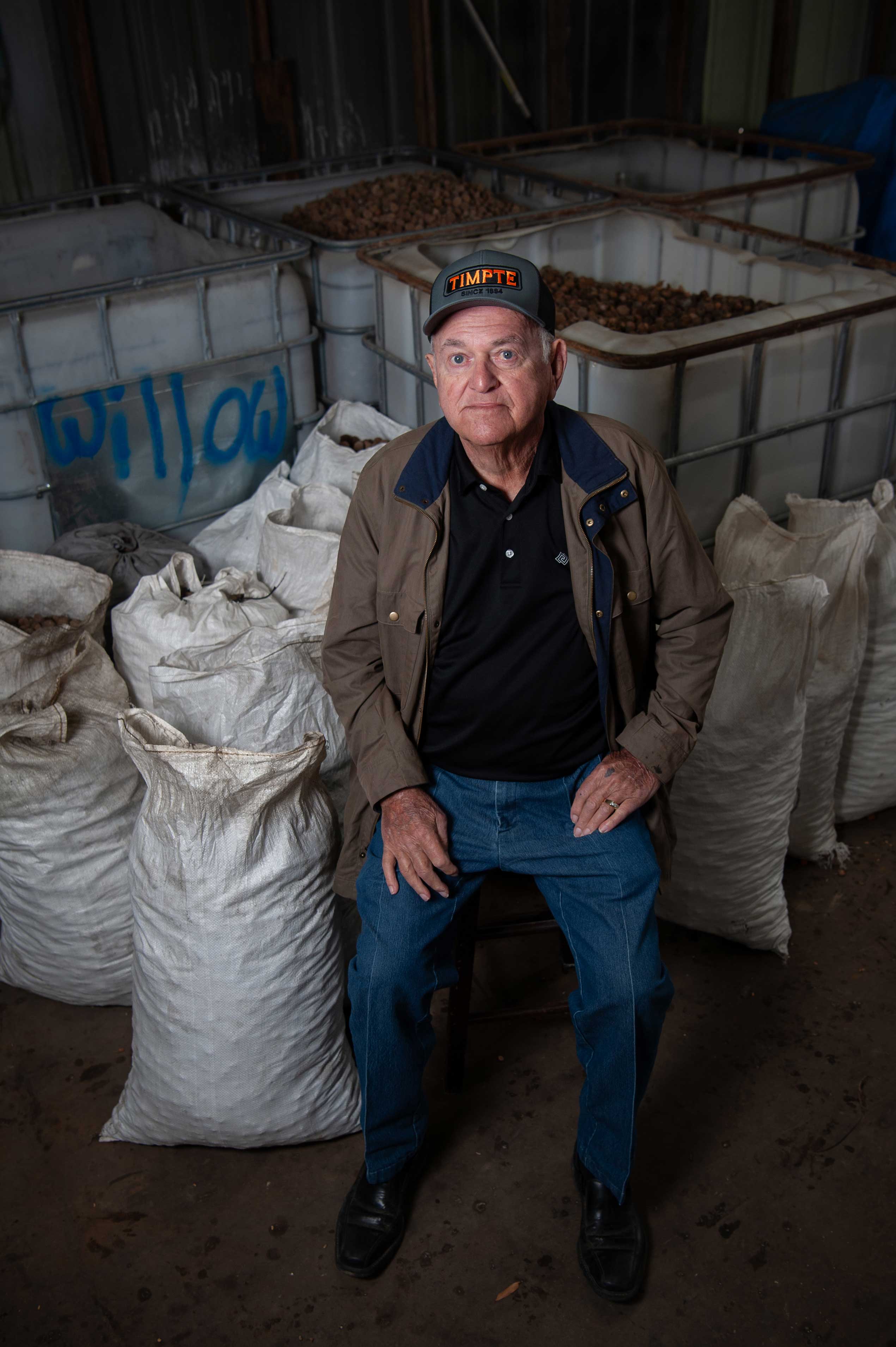
Seed Collector
M&C Forest Seeds
The old saying that money doesn’t grow on trees makes it sound like growing trees is easy. But so many forests have been lost across the Mississippi Alluvial Valley that the forests here won’t regrow on their own. Groups like The Nature Conservancy and the Natural Resources Conservation Service (NRCS) need to buy seedlings from nurseries—and the nurseries, in turn, need someone to supply the seeds that grow into those young trees.
When reforestation first took off in the Delta in the 1990s, state biologists put out a call for acorns. And Sidney Miller saw a business opportunity: Many of the people willing to collect acorns wanted to be rewarded immediately, in cash, but the state might take weeks to cut the check. So he paid cash for the acorns and then turned around and sold them to the state for a profit.
Miller had previously worked as a logger, which was an asset for his new business. He knew what trees grew where, and he could effectively dispatch collectors. In the decades since, the business has exploded. Ultimately, Miller notes with a chuckle, he’s become responsible for putting far more trees back in the ground than all the trees he cut down.
The business, along the way, has grown and changed. M&C Forest Seeds supplies not just the government but private nurseries, too. Miller’s grandson, Keith Cook, has stepped into a leadership role. But the work itself remains the same: An army of collectors fan out across a hundred-mile radius, picking up acorns from willing landowners.
Cook notes that apartment complexes are particularly fruitful sources, as owners who planted hardwood trees 20 years ago are now happy to have their properties cleared of the acorns they regard as clutter and waste.
M&C’s customers are exacting. They want not only the seeds of a particular species, but seeds from trees that have grown within specific latitudes—so they know the new forests will thrive when planted locally. So Cook works directly with a few dozen acorn collectors, sending them anywhere from St. Louis, Missouri to Vicksburg, Mississippi. He also buys from a diverse set of local collectors who are looking to make a few extra bucks. In total, about 100 collectors a week drop off seeds and acorns.
“They’ll bring them up here in trash bags. They’ll bring them up here in five-gallon buckets. They’ll bring them up here in truckloads,” Cook says.
A whiteboard features a hand-scrawled list of prices, which fluctuate based on supply and demand. M&C company forks over cash in exchange for the haul and then cleans and sorts and stores the product—work that must be done by hand. The acorn season generally lasts from September to January, which means M&C’s employees are often logging 12-hour days throughout the winter. “It’s seven days a week—it’s just wild,” Cook says.
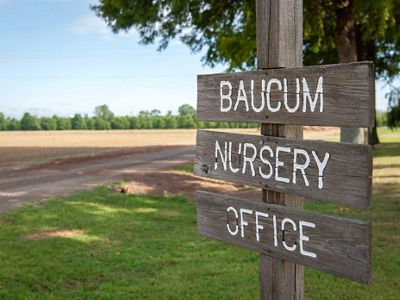
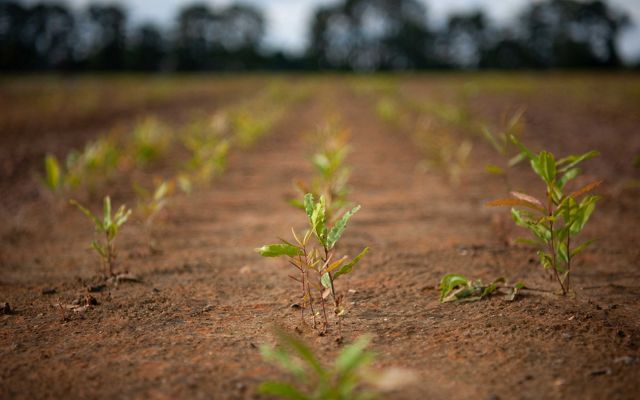

Nursery Manager
James Shelton
On a muggy morning this July, the sprinklers at Baucum Nursery tick through their cycle, wafting a light mist across the crop, a bit of relief against the heat. As James Shelton walks the dirt road that bisects the fields, his own relief comes in the form of a black baseball cap shading his eyes and short sleeves.
The t-shirt is branded with the logo of his employer, the Arkansas Department of Agriculture. Shelton himself a farmer, though a farmer of a peculiar sort. In the rows that line the 220 acres at this state-owned nursery, Shelton is regrowing the Delta’s wilderness.
“We have dogwood, we have sugar berry, we have hackberry—we have just a ton of different species planted in this field,” Shelton says. The varieties of oak alone merit their own sub-list: white oak, swamp oak, chinkapin oak, burr oak.
Shelton and his team planted these seeds, and they’ll stay in the ground for around ten months. Then the seedlings will be carefully lifted from the ground, bagged, and stowed into coolers to be shipped to their new homes across the Mississippi River Delta—as far south as the Gulf of America, where bald cypress are being planted atop the coastal ridges in an effort to anchor the quickly subsiding marsh.
Shelton grew up just a few miles away from the nursery, in the North Little Rock neighborhood of Rose City. When he was twenty years old, he was lazing on his mother’s couch. Then she demanded he find a job. So he stopped by the local temp service. There’s a job just up the road, they told him.
“I started in that back field over there, pulling trees,” he says, gesturing south, chuckling at the memory. “And I kind of fell in love with it.”
Shelton had always been an outdoorsman—he’d roam the local forests hunting squirrels and rabbits—though not necessarily a well-informed one. When it came to trees, so far as he knew there were oaks and there were pines. As he set to work at the nursery, the forests suddenly became vivid, a startling cosmopolitan ecosystem.
“And that was in 1992,” he says. Over the next thirty years, he worked his way up from field hand to nursery technician to nursery foreman to nursery manager.
Shelton arrived at Baucum Nursery amid a moment of change. When Baucum first opened in 1958, its focus was on pine trees—on improving their genetics, in particular, so that landowners could harvest more timber and make more money. Not long after Shelton arrived as a field hand, though, the nonprofit Ducks Unlimited launched a major reforestation effort in the Delta. They needed a supply of the sorts of native hardwood trees that once thrived in the swampy, river-fed landscape. Baucum signed a contract to provide two million hardwood seedlings. The next year, they upped production to three million. And then it kept on growing from there.
“Once the word got out, everybody wanted to buy these seedlings,” Shelton says. This year, if all goes well, Shelton expects to sell as many as nine million baby hardwood bottomland trees, which have become the main focus of the nursery. Almost every new tree that’s planted along the southern Mississippi River spent its first year in these rows. Baucum Nursery, then, is a vision of a wilder future for the river.
Once he’s beyond the range of the sprinklers, Shelton kneels down in one of the nursery rows and touches the leaves of an oak seedling. He top-pruned this set of seedlings just a week ago, he said, and since then they’ve already grown ten inches.
He hopes the nursery itself will have a similar growth spurt. He expects to grow more than eight million seedlings this year. In the decade to come, he’d like to see that figure double.
Competition is coming. Shelton has heard rumors that some of the big commercial timber companies in the Southeast have recently launched their own hardwood projects. Perhaps that’s because the Mississippi Delta already features several reforestation projects meant as demonstration projects for companies developing carbon credits. Because the new trees will absorb atmospheric carbon, helping to mitigate climate change, corporate buyers will fund such plantings as a way to balance out their own emissions. If these projects pan out, then there may soon be a local boom in reforestation.
The Mississippi Delta is an ideal site for such projects for several reasons: forests here are unlikely to burn in wildfires, a major risk for forestry projects out west. And, as Shelton notes, there is plenty of marginal land along the Mississippi River that was cleared by hopeful farmers but has proved less than viable.
“It’s a floodplain,” Shelton notes. “It was just not designed to be cropland. We are wasting resources trying to farm ground that is going to flood every year.”
This nursery sits amid the Arkansas River’s own floodplain, which reaches westward away from the Mississippi, a skinny tentacle extension of the Delta landscape. Throughout Shelton’s life here, he’s seen the local forests slowly disappear, replaced by soybean fields. With the forests went the squirrels and rabbits and quail he once hunted. It makes him think of his six-year-old, and how he wants her to be able to get out into the woods and see such creatures.
“That’s why every seed I grow, I want to see hit some type of soil and get replanted,” he says. “I want to make sure that a hundred years down the road, this place is still here and thriving.”

Executive Director, KKAC
Wilbur Peer
“Let me tell you about my momma and daddy,” Wilbur Peer says, leaning back in the office chair. “My daddy was out on his own at 15. He probably got to the fifth grade. My mother dropped out of school in the 10th grade.”
The life he’s conjured sounds drawn from a novel by William Faulkner or perhaps Richard Wright—a myth, just a stereotype of Southern literature, were it not the stark reality of history. Indeed, it’s a different world than this white-walled conference room perched on the eighth floor of an office tower in downtown Little Rock.
Peer was one of 12 siblings, he says—there were six sons and six daughters—which, as he notes, was a typical size for a Black family in Lee County, Arkansas, in the 1950s. “In my mind, I’ve always said they had that many children so we could pick a bale of cotton in a day,” Peer says.
Peer was born into farming, then. He was the first in the family to go off to college, but when he graduated, he came home to assist his parents—who, rare for a Black family in this era, had managed to hold on to the land they owned.
The industry mantra back then was to get big or get out: coax as much crop as possible out of whatever acreage you could buy. Perhaps that’s how he absorbed the idea that any wooded acres were wasted acres. Over the past few years, though, Peer’s view has changed. He’s evolved to see forests as “vitally important”—key for human survival, even given the emerging climate change crisis. More important, though, given Peer’s mission, is that forest conservation in the Delta is a crucial tool to help Black families hold onto their land.
Peer knew from the beginning that farming alone could not pay the bills. He’s held enough jobs through the years to fill a full sheaf of resumes: there was a stint at a community college in Phillips County, then at a health clinic. During this time, he noticed that many local ailments could be traced to the tainted water supply, so Peer began building sewerage systems across rural Arkansas. That led to a role in the U.S. Department of Agriculture and, later, a consulting business. Now, at age 72, when many others would have settled into easy retirement, Peer serves as the executive director of KKAC, a nonprofit he co-founded in 2015. A team of attorneys and legal experts work out of offices here in Little Rock.
The nonprofit is named for his family, collecting the initials of his grandchildren and nephews. It’s a fitting tribute since the nonprofit has always focused on future generations. KKAC was born when a group of local high schoolers toured the family farm in 2015, and Peer asked them if they knew where string beans come from. One brave 10th grader offered an answer: “From a can,” she said.
“I said, ‘Oh, lord, have mercy,’” Peer remembers. “In the heart of the Delta, this kid does not know where string beans come from.”
Quickly, though, Peer realized the problem was more significant than just agroecological knowledge. The agricultural economy is built atop a bedrock of federal support, and to thrive, the next generation of farmers needed to know how to navigate this byzantine bureaucracy. Then there was the problem of estate planning: too often, Peer found, Black landowners passed away without a will, which left the land in a legal tangle. The easiest path for many families was to sell the land and divvy the cash. Black families, Peer notes, once owned 14% of U.S. farmland. Now, that figure is down to 1.5%. By his estimate, as much as 30% of the loss is due to poor estate planning. “My primary objective now is to make sure that African Americans do not become a landless people,” Peer says.
These threads—the work demystifying federal agencies and the desire to help with estate planning—eventually led Peer to an insight: one of the best tools to help Black families hold onto their land was to take it out of production. The U.S. Department of Agriculture will pay farmers for “conservation easements,” in which a landowner commits to turning cropland back into wildlife habitat. The landowners are paid just under the market value for the land for a perpetual easement. Then the USDA plants trees—which landowners can later request to harvest selectively so they can sell the timber. The owners can lease the land to hunters, too. And the new forests are good for the environment. “But, most importantly, you can pass on the land to the next generation,” Peer says. “It is a win-win, as we see it.”
But Peer thinks the system can still be improved. Over a recent three-year period, the KKAC helped 25 Black landowners in Arkansas apply for funding through the USDA’s Agricultural Conservation Easement Program. None of the applications were successful.
To Peer, this was an echo of a dark history. Peer knows firsthand how the USDA, his former employer, has failed Black farmers. In his early farming years, in the 1970s, Peer says he filed applications for federal loans every year in late December or early January. But he’d never be approved until April or May—when the crops he was trying to fund were already in the ground. The loans he was offered might be half or less of what he’d asked for. “And on top of that, it would have to be in a supervised bank account,” he says, noting that a co-signer from the government would have to approve any purchases he made.
Peer and his family were lucky: they held on to their land. Too often, though, such small and tardy loans became a severe strain. White landowners would be tipped off by the banks their Black neighbors were struggling and likely to sell soon.
“So, they’d be lined up to buy the land,” Peer said.
In the case of conservation easements, the discriminatory outcomes were less calculated. It’s just that the USDA wanted to restore ecosystems; when selecting which easement applications to fund, the agency prioritized large expanses of land. By Peer’s estimate, the average Black landowner in the Delta holds 150 acres—relatively tiny parcels, given that in some Delta counties, the average farm spans more than a thousand, a fact that is not unrelated to the USDA’s troubling policies. The result is that Black farmers are effectively shuttered from the easement programs. Whatever the intention, then, Peers sees the prioritization of large parcels as one more structure that keeps Black families from holding onto their land.
The USDA has a program that partners with regional agricultural organizations to encourage local conservation. In 2021, KKAC applied as a partner organization and now receives a pot of money set aside for minority farmers. Black farmers, then, compete amongst themselves for the easements. Peer expects that all 30 of the previously unfunded applications will be approved this year—helping to put 2,000 acres of Black-owned land into forest. And, more importantly, helping ensure the land stays in its owners’ hands.
It’s a tiny sliver of the more than 10 million acres of Black-held land across the South, but a significant step toward a better world. “If our community owned all the land we lost over the last hundred years, we wouldn't have as many of our children incarcerated because we would have things for them to do,” Peer says. “At the end of the day, we’re all in this together. The more people we can help be productive, the fewer people we have to care for.”

Wetland Biologist
Jody Pagan
Conjure your scientist archetype: White lab coat, maybe, or thick-rimmed glasses. Someone buttoned-up and a bit nerdy.
That is a world away from Jody Pagan, with his baseball cap and long goatee. But once he delivers a disquisition on the geology of the Mississippi Alluvial Valley—the Holocene alluvium, the dendritic patterns of early Wisconsin glacial outwash, the loess soils that overlie some ancient marine sediments—you realize that Pagan is not just a scientist but a true authority. Few people know the nature of the Mississippi Alluvial Valley better.
More specifically, Pagan is a wetland biologist who builds and rehabilitates the ecosystems most beloved by hunters. His work has carried him to hundreds of hunting clubs across North America. But it’s his home region, the Arkansas Delta, that is the center of his work.
Once upon a time, half a million acres of grasslands unfurled between the bottomlands of the White and Arkansas rivers—a rare prairie ecosystem tucked within the swampy alluvial valley. Known as the Grand Prairie, this part of Arkansas is now dominated by rice farming. To duck hunters, though, it’s long been considered hallowed ground. (Indeed, archeologists have found duck effigy pottery here that is nearly a thousand years old.) Land destined to be preserved as hunting ground can go for $16,000 an acre; some of Pagan’s clients will snap up properties spanning 10,000 acres or more. But since much of the prairie was long ago converted to farmland—and sometimes subsequently abandoned—the owners need someone like Pagan to bring back the grasses and forests and waterways. It’s a high-dollar business. Some of his clients, he notes, will spend more than a half million dollars in a matter of months.
“This kind of sounds corny, but you know how Arnold Palmer has his golf courses?” Pagan says. “I want to be known as the guy who builds the best waterfowl properties.”
Pagan grew up on a small farm in southern Arkansas, where as a 12 year old he helped his father dig out a pond. “A big pond,” he clarifies: the work required bulldozers and track hoes, a rare scale of ambition in the early 1980s.
“Back then, farmers were still clearing land as fast as they could get the bulldozers down through the Delta,” Pagan says. But as he built a slough and planted cypress seedlings, this young man saw his future.
“I just loved it,” he says now. “I was like, ‘I want to do this.’”
Pagan studied biology at the University of Arkansas at Monticello, where he focused on wetlands and waterfowl. In 1994, after graduating, he landed a job with the U.S. Department of Agriculture’s Natural Resources Conservation Service (NRCS). The timing could not have been better: that same year, the federal Wetland Reserve Program was expanded into Arkansas. The NRCS began to partner with landowners to bring back swampy tracts for the sake of wildlife. Over the next two years, Pagan planted trees on 80,000 acres, work that launched his obsession. Pagan eventually set a goal: he wanted to be personally responsible for restoring a million acres of wetlands—a benchmark he projects he’ll hit in the next few years. “People say it’s a passion,” he says, “but it might be an addiction. I lose sleep at night wondering what we can do next to restore the Delta.”
One challenge in the alluvial valley is that the land was drained so long ago, and is so heavily altered by levees and drainage canals, that it can be hard to envision what it once looked like. To solve that problem, Pagan partnered with other scientists to develop a set of “potential natural vegetation” maps. The maps splice together data from various sources—records from the first U.S. surveyors to traverse the alluvial valley in the 19th century, notes from timber companies and geological surveys—to intuit what kinds of prairie or forest might thrive on every acre of the Delta. Today, the maps are a key part of any restoration project in the area.
In 2005, after a decade at NRCS, Pagan partnered with a prominent conservationist named George Dunklin to launch Five Oaks Wildlife Services. The company was named for Dunklin’s 16,000-acre farm in the Grand Prairie, which focused on rice, waterfowl and wildlife management. The partnership has subsequently unfolded into new initiatives.
“Our latest evolution is we launched a 501(c)(3),” Pagan says: Five Oaks Agricultural Research and Education Center, or FOAREC, aims to be a leader in bottomland hardwood ecosystem research, using mallard ducks as a key indicator of ecosystem health. In addition to his work as the research director at FOAREC, Pagan runs his own company, Ecosystem Protection Service.
Now, after 30 years in the business, Pagan is returning to trees that he planted in his first job, which need thinning for the sake of migrating songbirds. Still, he notes that even after several decades of restoration, less than 1% of the Mississippi Alluvial Valley forests have been restored. And some of the forests in the wildlife refuges that federal and state governments formed in the 1980s and 1990s are now struggling, inundated by too much water running off the surrounding farmland.
Half of Pagan’s work is for the government, and half is for private landowners. Sometimes the landowners want money from the government. Sometimes they want to build a beautiful hunting club. Pagan doesn’t care, as long as the forests return. “I want my grandkids to enjoy seeing ducks and deer and all that, like I did,” he says. “I don’t care if it’s carbon payments, I don’t care if it’s CRP, I don’t care if it’s a tax credit—more, more more.”
Support the Floodplain Reforestation Program
You can support this innovative pilot project to deliver essential floodplain reforestation to benefit the Mississippi River Delta and demonstrate proof of concept for expansion in other regions.
More Stories
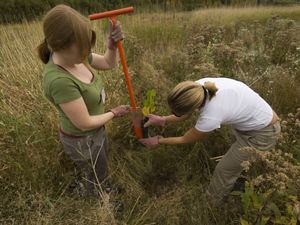
Reforestation Hub
The Reforestation Hub identifies up to 148 million acres of total opportunity for reforestation, which could capture up to 535 million metric tonnes of carbon dioxide a year.
By Susan Cook-Patton

Family Forest Carbon Program
The Family Forest Carbon Program, created by the American Forest Foundation & The Nature Conservancy, is a pathway for owners of small forests to address climate change through climate-smart forestry.
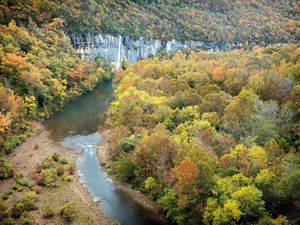
Bringing Benefits to Farmers and Water Quality in Arkansas
Farm Bill funding helps Arkansas farmers adopt key conservation practices.
